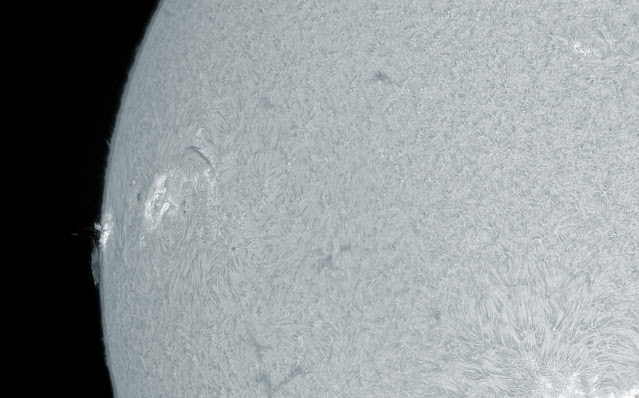Nice Prominences
It took two months for a dominant high pressure system to arrive and clear away persistent daily clouds. On April 12th only thin haziness kept skies from being completely clear. I set up my solar telescope in late afternoon and didn't begin imaging until 3:22 pm (EDT). Morning is usually preferable for solar imaging. I worried about bad seeing, but seeing was reasonably good. It was lovely to bid chilly winter goodbye and enjoy working in temperatures ranging from 78 to 81 degrees with hardly any wind.
No large sunspot umbras were present, but lots of smaller ones were scattered among stringy filaments as you can see in the following 20-panel mosaic processed to show disc detail. Each individual panel is a stack of 400 video frames from a 4,000-frame video.
The most interesting features are active area 3272 just below center and active area 3276 rotating into view near the solar limb on the left.
The next image is a close view of 3272 showing a complex arrangement of tiny umbras set among white energetic emissions. These show up nicely when the picture is viewed at full size. Our view from Earth looked down from above on a beautiful example of dark magnetic arches to the upper right of the umbra region.
The next two images show enlarged portions of the most interesting limb sections.




No comments:
Post a Comment